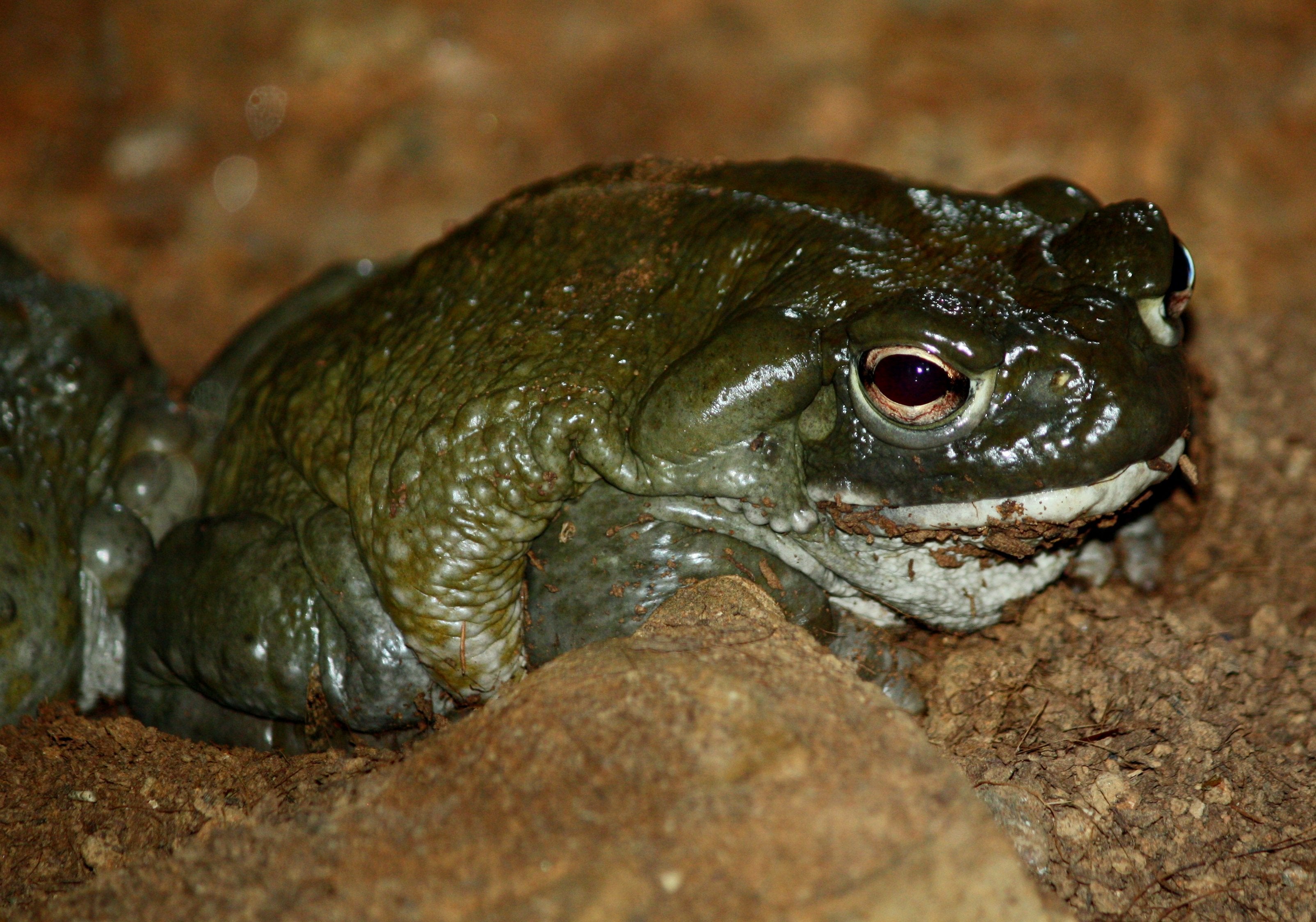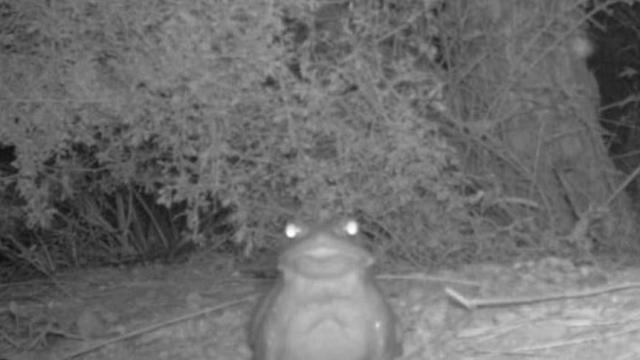If you kiss a frog, you don’t get a prince. But if you lick a Sonoran desert toad (Incilius alvarius, formerly Bufo alvarius) you might have a transformative, quasi-religious psychedelic experience — or you might get sick and die. And either way, the National Park Service is asking that you don’t do it on the agency’s land.
“As we say with most things you come across in a national park, whether it be a banana slug, unfamiliar mushroom, or a large toad with glowing eyes in the dead of night, please refrain from licking. Thank you,” The park service wrote in a Facebook post published last Monday, along with an alarming trail cam capture of the aforementioned amphibian.
The animal, also known as the Colorado river toad, lives in a range spanning from southern Arizona to the southwest most corner of New Mexico and south across the border into northwestern Mexico. Historically, the amphibians also inhabited a sliver of southeastern California, but the species is assumed locally extinct there. The last verified record of a Sonoran desert toad in the state is from 1955, according to the California Department of Fish and Wildlife. However, its New Mexico and Arizona territory encompasses numerous national parks and monuments.
And at those sites, NPS is again asking you to keep your distance from the toads. “These toads have prominent parotoid glands that secrete a potent toxin. It can make you sick if you handle the frog or get the poison in your mouth,” the agency explained. What the park service didn’t mention though, is why some might be eager to get their hands (or tongues) on the toads.
As part of their secretions, Sonoran desert toads produce a powerfully hallucinogenic compound known as 5-methoxy-N, N-dimethyltryptamine (5-MeO-DMT). The chemical, classified as an illegal Schedule I controlled substance, is closely related to other toad toxins, as well as many compounds made by plants. And — as the name suggests — is an analogue of DMT, which is sometimes called the “God molecule” or “spirit molecule.”
5-MeO-DMT has become an increasingly popular drug in recent years, under the moniker toad venom — though biologically it’s a poison, not a venom. As a drug, 5-MeO-DMT is usually smoked in a “ceremonial” setting. Celebrities including Mike Tyson, Chelsea Handler, and Hunter Biden have all publicly claimed to have taken it. There is some research underway to evaluate the substance’s potential safety and beneficial use. Plus, the compound has gotten an additional advertising boost from discussions of it on platform’s like Joe Rogan’s podcast.
Consequently, toad poaching has grow into an increasing problem. The species is now considered threatened in New Mexico, at least in part because of “collectors that want to use the animal for drug use,” according to the state’s Department of Fish and Wildlife.
And herpetologists have warned that continued harvesting could threaten the toads’ survival. “There’s a perception of abundance, but when you begin to remove large numbers of a species, their numbers are going to collapse like a house of cards at some point,” Robert Villa, president of the Tucson Herpetological Society, told the New York Times in March. Synthetic versions of 5-MeO-DMT can be made, but according to the NYT report, multiple promoters of toad trips consider the synthetics sub-par.
Use of toad venom can imperil people as well as amphibians. the Sonoran desert toad’s toxin contains a cocktail of chemicals beyond 5-MeO-DMT, some of which can be lethal. There have been a few notable cases of someone dying after using the drug recreationally, though these deaths are uncommon.
It’s unclear if or how frequently NPS has actually encountered visitors attempting to lick or collect toads at its sites. The park service didn’t immediately respond to Gizmodo’s request for comment.

Sonoran desert toads are one of the largest toad species in the U.S., averaging about seven inches in length. They spend most of their lives hibernating underground, and are nocturnally active between May and September — in time to take advantage of the summer monsoon season. The toad’s call is a short-duration, low-pitched “toot.”
Though some claim that the practice of harvesting, drying, and smoking the amphibian’s secretion is an ancient and Indigenous practice going back thousands of years — historical research suggests it might only be a few decades old (unlike use of other, traditional psychedelics), according to the NYT.
